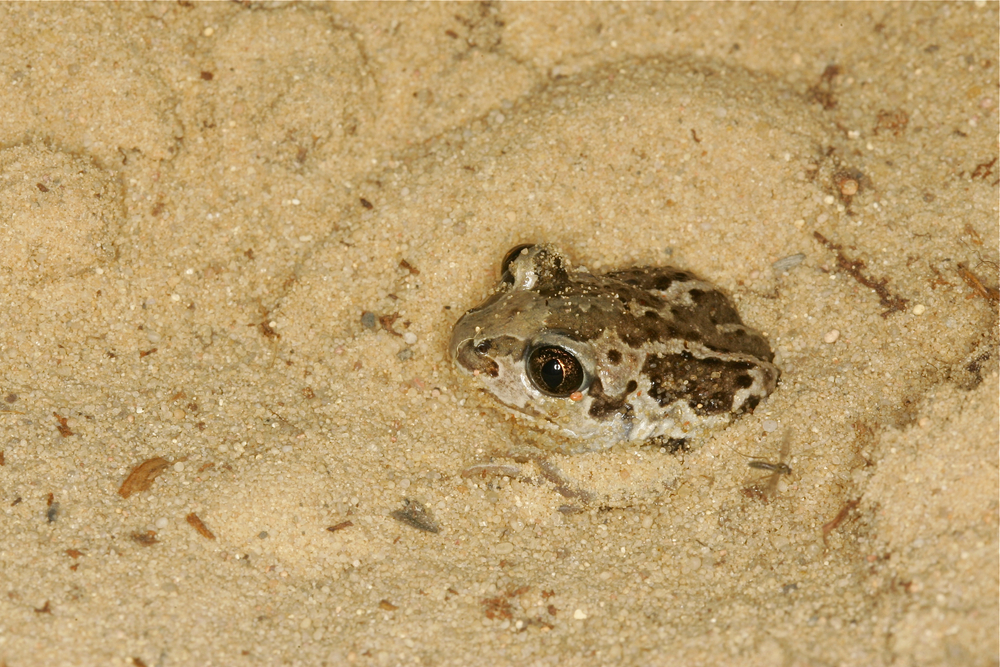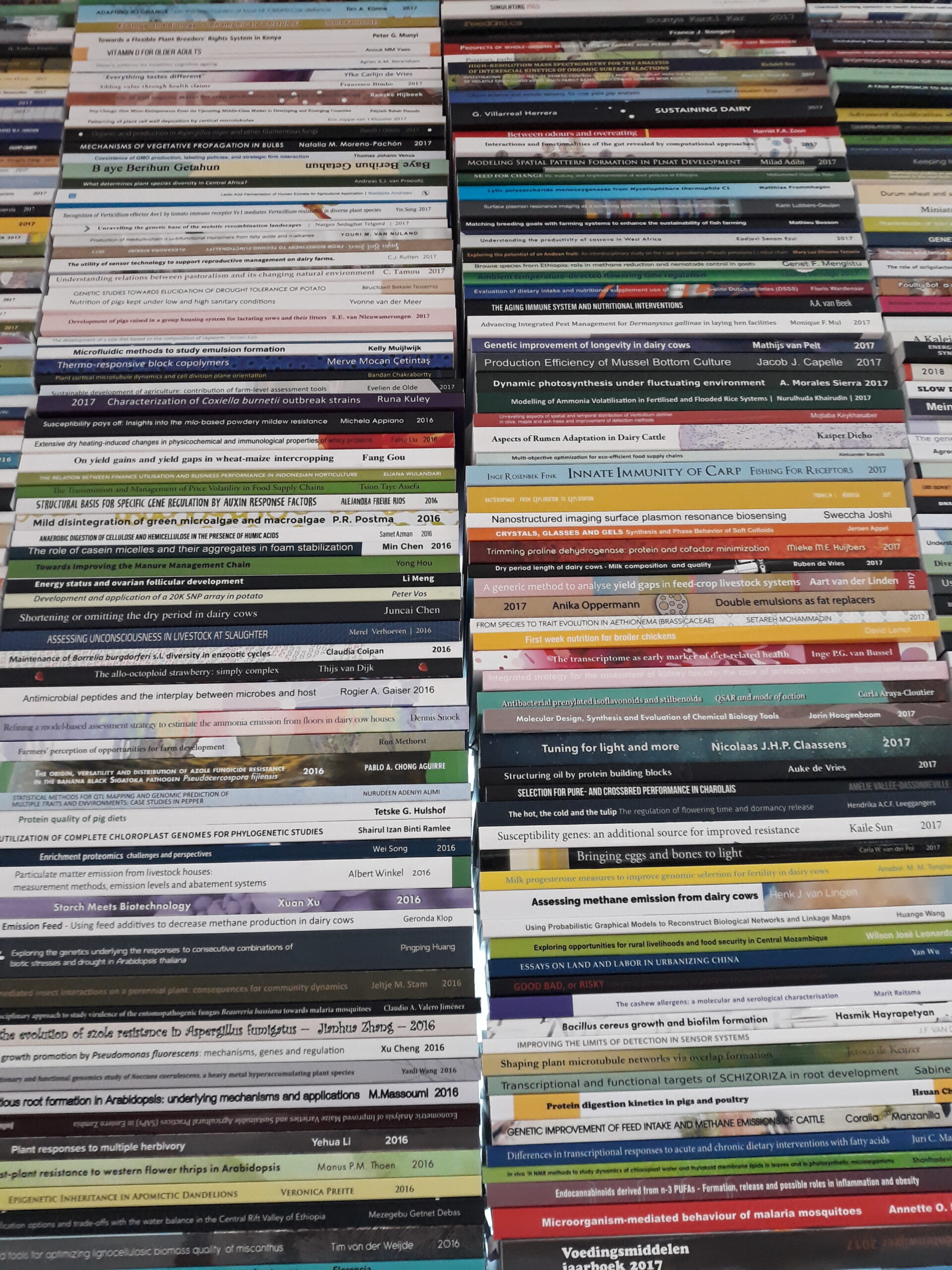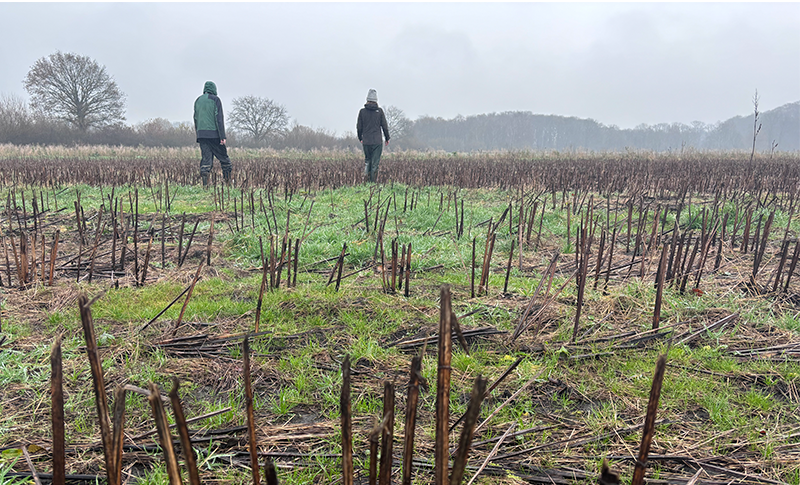Precision agriculture enables farmers to work better and more precisely, whether they are spreading fertilizer, controlling diseases, irrigating their crops, or pursuing nature-related goals. This has been demonstrated by the national precision agriculture living lab (NPPL). Resource checked in with three precision farmers: an arable farmer, a fruit grower and a dairy farmer.
On the Slichtenhorst country estate just south of Nijkerk in the province of Gelderland, four woolly Hungarian Mangalica pigs are rootling and basking in the sun. They keep the blackberry bushes short so the saplings can grow better. Not far away is the Aan de Breede Beek vineyard, where the vines are in bud. Someone from a nature organization is counting the herbs in the nearby arable fields to see whether the farmer on the estate qualifies for a grant for nature management. This farmer is Pieter van Leeuwen Boomkamp, who lives in a historic 16th-century farmhouse on the estate.
Van Leeuwen Boomkamp grows potatoes, onions, beets, maize, grain, carrots and chicory on 140 hectares of land. Because he has 96 small fields, most of them surrounded by hedgerows or ditches, he practises precision agriculture. Each plot has a different soil type and humidity level, so growing conditions are varied. ‘Every plot gets its own approach. In the old days, when my father was farming, that was called common sense. Now it’s done digitally and the computer helps work it out,’ says Van Leeuwen Boomkamp.
He has been participating in the NPPL programme that helps farmers and horticulturalists practise precision farming since 2018. Experts from WUR advise 26 participants on how to apply precision techniques, with the aims of increasing yields, reducing costs and the environmental impact, and improving food quality.
Without my network I would have gone bust
‘We focus on farm management that targets variation by making use of technology,’ says Corné Kempenaar, who coordinates the programme from the WUR side. ‘At the heart of it is dealing with varied conditions. The technology – sensors, drones and satellites, for instance – is just the means.’
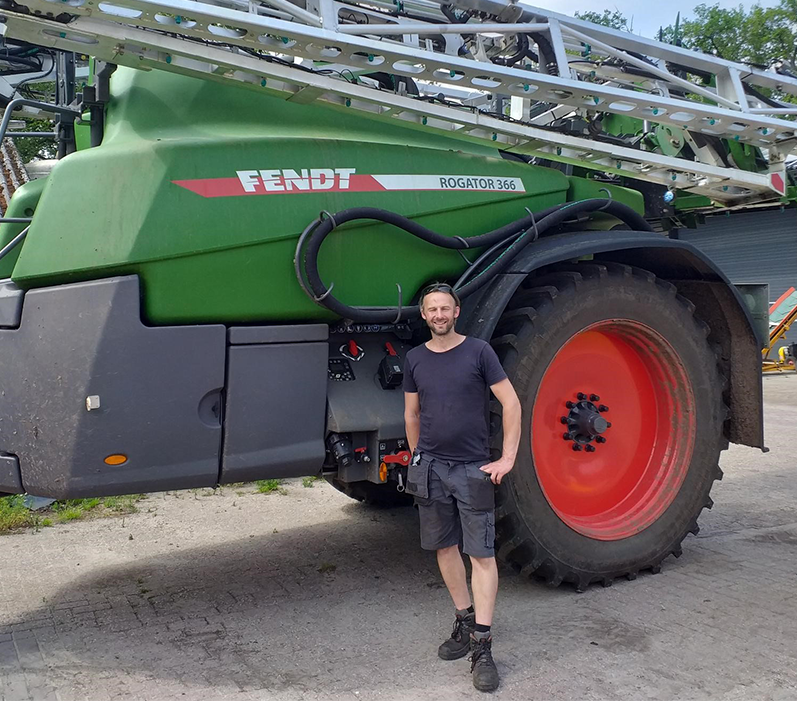
Soil scan
Arable farmer Van Leeuwen Boomkamp drives a huge tractor into the farmyard. He has been spraying weedkiller using an electronic soil scan that measures the amount of organic matter and the acidity of the soil. He uses that measurement to dose the weedkiller. Whereas the sprayer on the tractor used to treat all the plants in a 36-metre band identically, the new sprayer can vary the dosage. This leads to a saving of 10 to 15 per cent on herbicides, he reckons.
For his potato crop, Van Leeuwen Boomkamp has a harvester with a location-specific yield meter, so he knows which parts of the plot produce high and low yields. He links that information with his soil scan so he can correlate his soil management with the yield.
His aim is to have soils with plenty of organic matter that sequesters CO2. For that reason, he fertilizes the soil mainly with compost and green fertilizers and practises non-inversion tillage rather than ploughing. ‘I hope I will be recompensed for this CO2 storage once there is a climate policy for agriculture.’
Nowadays, thanks to upscaling, you don’t have an overview. Precision agriculture gives that back
Van Leeuwen Boomkamp also makes use of drip irrigation, known as precision irrigation. Weather stations and sensors that measure soil humidity deliver the data for customized watering, thanks to which crops suffer less drought stress in the summer and the farmer can use less water. But he does see two significant disadvantages too: it is expensive and after the harvest, the plastic hoses have to be dug up, creating a mountain of plastic waste. He is testing drip irrigation on five hectares of carrots this year.
Van Leeuwen Boomkamp continuously weighs up the costs and environmental benefits of his crop-farming methods. ‘If chemical and technological methods cost the same, I opt for the technological ones.’ Often the techniques do not yet come ready to use, he notes. ‘The nice thing about the living lab is that you can exchange knowledge in the network. I’m in a WhatsApp group, for instance, with 15 pioneering farmers.’ But Van Leeuwen Boomkamp learns the most from his own network. ‘I went to technical college and then worked for a farm machinery company for 10 years. I have a network of guys who know a lot about technology and electronics, and who will come over to spend an evening fixing a machine or a program that isn’t working. Without that network I would have gone bust.’
Sprayer
Martijn Slabbekoorn is another pioneer of precision agriculture. He runs a family farm (he is the sixth generation) that grows apples and pears in Kapelle in Zeeland. The fruit farm now covers 70 hectares divided over three locations. Slabbekoorn runs the farm with his wife and one permanent farm worker, and the additional help of a regular team of Polish migrant workers and some casual labour. At harvest time, 40 to 50 people work at Slabbekoorn Fruit.
Six years ago, Slabbekoorn asked the supplier to provide him with a sprayer with GPS that could dose each plant separately and would also record where it has sprayed. That was a new development in fruit farming. The machine manufacturer had the machine but no software; the software producer had no machine.
In the old days it was called common sense; now the computer helps work it out
One year later, when Slabbekoorn met a fellow fruit farmer with an IT background, the connection was made and there was a breakthrough. The result is a sprayer with nozzles that can open and shut independently of each other. The data are sent to a registration program. ‘Say we see apple scab in certain rows on the farm. We can then see in our registration program what treatments those rows had and whether they were any different. That enables us to assess the effect of treatments. That internal check is the most important thing for me.’
Using these precision instruments, Slabberkoorn has now discovered that he shouldn’t spray his crops with insecticides after 10 o’clock in the morning. In the summer, the humidity is generally too low after 10 o’clock and the insecticides don’t work well. But the precision machinery also ensures that only the leaves are sprayed, reducing the amount of liquid that gets blown away. As a result, Slabbekoorn uses less pesticide that other fruit farmers.
We try things out but we keep our feet on the ground
How much the environmental is spared varies per fruit type and variety. ‘GPS delivers savings of roughly five per cent. The sensor sprayers that only spray the plant produce an average saving of 50 per cent of the product when used on young trees and 10 to 20 per cent for mature trees.’
Slabbekoorn had three diseases and pests to contend with. Firstly, scab, a fungal disease that spreads through the air, so the entire plot has to be sprayed for it. In this case it is the sensor sprayer that makes savings. Secondly, aphids, which he combats with insecticides. He used to spray with broad spectrum insecticides, but these killed off useful insects as well. So he now uses selective agents as part of an Integrated Pest Management approach in which he also uses biological agents. Using biological agents alone wouldn’t work, says Slabbekoorn.
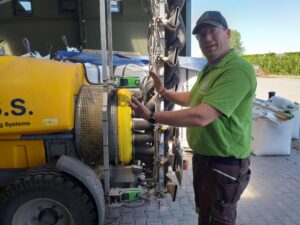
Drone
And that is demonstrated by the third pest he has to deal with: the pear blossom weevil. There are still no biological or selective agents for combatting these weevils, so a strong old-fashioned insecticide is required. He now uses a drone to locate the weevils. It works like this: the weevil lays eggs in the flower buds and the larvae eat the buds, so there is no blossom. The drones sees the places in the orchard with less blossom, and that is where it needs to spray. Which can only be done after harvest.
Like Van Leeuwen Boomkamp, Slabbekoorn doesn’t see precision agriculture as something new. ‘In the old days, a fruit farmer would walk through his orchard, and he knew exactly what was going on in it. Nowadays, thanks to upscaling, you don’t have that overview anymore. And the workers don’t have that knowledge or interest. Precision agriculture gives you back that watchful eye and the overview.’
Grassland
Precision agriculture can be used when growing grass as well as potatoes and apples. Proof of that is provided by Gerard Uijterlinde and his wife Els Uijterlinde-Mentink, who run a farm called Erve Mentink near Oldenzaal.
We didn’t start growing herb-rich grassland for the sake of nature and biodiversity
They have 200 cows and 80 hectares of land in the rolling Twente countryside, 300 metres from the nearest road. Most of their cows are in the barn. In summer they only go outside at night, says Gerard, when it’s not too hot.
When the cows step outside, they find themselves in a large meadow with 13 clearly separated strips of grassland. Gerard and Els are experimenting with precision agriculture here. On some of the strips is herb-rich grassland, while uniform English rye grass grows on others.
We see more deer in the herb-rich strips. That’s just so nice
The farmers are testing to see which plot of herb-rich grassland performs the best. They are guessing it will be the strips on the drier land because herbs take deeper root than grass and perform better than grass in dry periods.
‘We want to get more out of the soil, which is the starting point for production,’ says Gerard. They have also started an irrigation trial, using soil humidity sensors to see how quickly the herb-rich turf dries out and how much they then have to irrigate. They also measure the effect of irrigation on yields and on soil life. Although it’s not too bad at the moment, there have been water shortages in Twente in recent years – the stream behind the farm has been continuously dry.
Their irrigation trial might clear up a persistent misconception among livestock farmers: that uniform grass without herbs provides more protein. ‘We didn’t start growing herb-rich grassland for the sake of nature and biodiversity,’ says Gerard, ‘but to improve the soil. We are now seeing a higher yield on the herb-rich strips than on the strips with only English rye grass, but the plots with grass and clover mixes are doing better too. The 20 hectares of herb-rich grassland pays off for our farm.’
The fact that more herb-rich grassland is also good for nature is a nice extra, says Els. ‘We see more deer in the herb-rich strips and the pigeons, herons and storks visit them more often because there is more life in herb-rich grassland. That’s just so nice.’
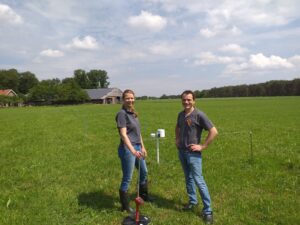
Supervision
Gerard and Els are unusual farmers who know a bit about research. Gerard studied Agrotechnology at Wageningen, and Els did Animal Sciences. Their main motive for practising precision agriculture is to capture more nitrogen in the soil and increase the capacity of the soil to supply nitrogen.
They joined NPPL last year. Every participant has a supervisor from WUR. Occasionally, they find that the knowledge of the advisors in the sector is not relevant to the methods used on their farm. ‘When we first started, we were advised to sow the herb-rich grassland in the spring. Not a good idea, because that’s when the weed pressure is highest. And we were advised against fertilizing. But we do fertilize because otherwise even herbs run low on nutrients. We try things out, but we do keep our feet on the ground.’
‘We have a total of 20 precision agriculture methods,’ says WUR coordinator Corné Kempenaar. ‘The farmers are in charge; a WUR supervisor explains which technology and knowledge the farmer can use, what the pros and cons of the options are, how much they cost and what social benefits they bring with them. A WUR researcher evaluates the results as well. What we often see is that things get stuck at the step going from the data to a digital dosing or decision. We help there with finding guidance modules and involving suppliers in the process. If you are critical, you’ll find that suppliers integrate their technology better with the bigger picture.’

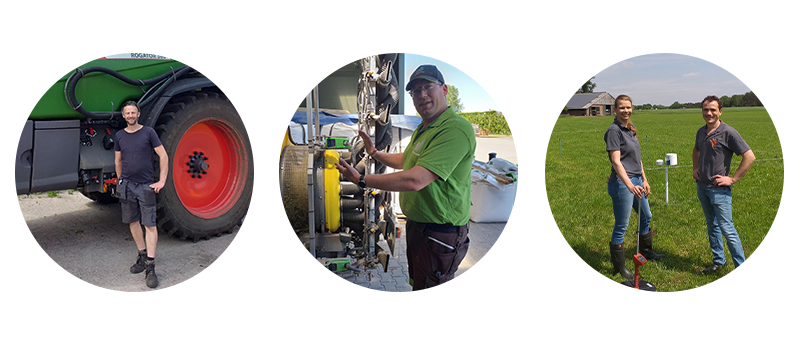 Pieter van Leeuwen Boomkamp, Martijn Slabbekoorn en Gerard Uijterlinde and his wife Els Uijterlinde-Mentink. Photos Albert Sikkema
Pieter van Leeuwen Boomkamp, Martijn Slabbekoorn en Gerard Uijterlinde and his wife Els Uijterlinde-Mentink. Photos Albert Sikkema 